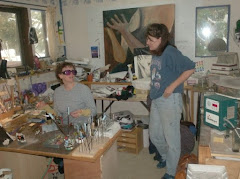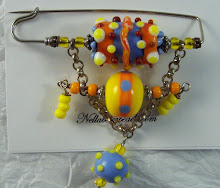



Finger knitting can be usefull!
Tuesday, September 22, 2009
Friday, September 18, 2009
joining the modern age
I love card weaving but I can only use so many belts. Now I'm stitching them into little pouches! Finger knitting is a great way to make matching cords for the pouches. Check out my first ever 'how-to' video if you'd like to make cords for your hand woven works too.
Sunday, September 13, 2009
card weaving 101
Oh where. oh where have my pictures all gone? lol. I had them nicely arranged from one to five but when I was trying to put the appropriate explanation beside each one photo numbers 1 through 4 dissappeared into the abyss that is the world of we-are-smarter-than-up-so why-don't-you-give-up computers. The pictures are in the previous post but they are in the wrong order. I'd straighten this all out but the originals are in another computer. I'll change it all tonight but for now this will have to do. So these two posts should be a visual reference for how the cards need to be in worked in double faced card weaving. Double faced card weaving is where the pattern you work shows up in reverse on the other side of the weaving. It usually involves two different colors of thread. In this case the two colors are green and white.
So these two posts should be a visual reference for how the cards need to be in worked in double faced card weaving. Double faced card weaving is where the pattern you work shows up in reverse on the other side of the weaving. It usually involves two different colors of thread. In this case the two colors are green and white.
The blue line you see is drawn on both sides of the cards as a reference to make it easier to create the pattern. It's much easier to see a line than it is to look for the A and B holes that decorate most cards.
Photo number 1 shows the 'home position', at least for this project. It can be on the bottom of the pack, the top of the pack or closest to you. The key is to keep it consistent. It's the fact that the lines are all together in the same position at the same time that is important. The home position you decide on will be and indicator as to when a row of the pattern has been completed . For this choice of home position, when the cards are directly opposite it's time to move to the next line of the pattern just like it is when they are in the home positon. If the card line is horizontal then a row has only been half worked. But that is getting slightly ahead of things.
Photo 2 shows the pack divided into two groups; the cards that were turned towards the fell (the weaving) to create the background and which cards were turned the other way to create the pattern. By create I mean that the cards were turned to bring the appropriate color of thread to the top where it would be locked in place by the weft thread of the shuttle.
If you get into the habit of sliding the cards that make up the background pack of cards close to you and sliding the pattern cards away from you the work will move along faster.
If you have marked your pattern before hand it will indicate which way to turn the background pack (green threads), which for this row was 'backwards' or towards the weaving. (Linda Hendrickson advices this and she does beautiful work.) The blue line is now on top.
The shuttle moved through from right to left. In double faced card weaving the cards move twice, or one quarter of a complete rotation for every one row of the pattern. With the shuttle on the left of my weaving I know that I am only half way through the two step row of the pattern. The more ways I give myself to know where I am in the pattern the less ripping out I have to do. That's all good!
Photo 3 shows the second part of this row of the pattern. The blue line is closest to the fell now, because the background cards were turned backwards again (towards the weaving). The pattern cards turned forward. The white threads showed up against the green background, just what was supposed to happen!
The pack cards were then slid into one group with the blue lines all in the same place. If they aren't all in the same positon a card was missed or not turned correctly.
The shuttle moved through the warp from left to right. When it's on the right hand side of the warp it's an indication that the pattern row is completed.
Photo 4 shows the start of the next row of the pattern. The row indicator got moved (see earlier post). It showed that for this pattern row the background (green threads) had to turn forward. The blue line shows that those cards were, indeed, turned forward, away from the fell. My pattern cards will be turned backwards, towards the fell. With that line marked on the cards it is easy to see if I've turned them the right way.
Photo 5 shows the cards all turned the last time for this row of the pattern and resting again in the home position. I slid the cards all into one pack to tell myself that the pattern row was finished.
Hope this photo lesson helps other card weaving newbies!
Wednesday, September 9, 2009
keeping track of rows in the pattern
 The detail of the details......
The detail of the details......
The devil is in the details

 Well it took a lot longer than I expected (doesn't it always) but I think I have the basics of card weaving figured out. I got lots of help from fellow weavers on Ravelry. That was great!
Well it took a lot longer than I expected (doesn't it always) but I think I have the basics of card weaving figured out. I got lots of help from fellow weavers on Ravelry. That was great!
Monday, August 24, 2009
this is frustrating as all getup!
 I've decided that card weaving is compatible with bead making. Okay, that is a stretch but there is logic there. Let me explain.
I've decided that card weaving is compatible with bead making. Okay, that is a stretch but there is logic there. Let me explain.






